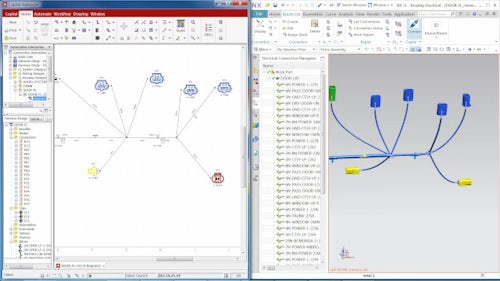CIMdataの最新の電子書籍で、ジェネレーティブ・デザイン技術を先導するNXの詳細を見てみましょう。
この電子書籍で学べる内容:
- トポロジー最適化やコンバージェント・モデリングなどの最新の設計手法
- ジェネレーティブ・デザインの詳細
- 反復サイクル
- ジェネレーティブ・デザインの例
この電子書籍でCIMdataは、NXの革新的な機能を製品設計に導入し、(電子書籍で紹介した) 新たな手法を使ってより軽量で強力な製品を作成する方法を提案しています。
シーメンスデジタルインダストリーズソフトウェアのメールに初めて登録された方は、登録直後に送信されるメールで、情報提供 (オプトイン) に関する確認をお願い致します。
Explore more design options in less time with generative design
Generative design is turning the traditional design paradigm on its head. Conventional design methods rely on a "model then analyze" iterative cycle, but in generative design, the product designer first identifies the necessary design space and design goals. Once initialized, software algorithms do the job of automatically cycling through numerous geometric model permutations seeking an optimum solution based on defined constraints without the need for human intervention. Generative design methods facilitate faster decision-making, and with a given set of conditions, designers can conduct more experiments in much less time than is possible with traditional design methods.
Minimize cost and optimize performance with generative technology
The emerging technology of generative design is gaining interest in product development communities because it creates optimized product designs from requirements and constraints rather than by making the geometry first and then validating. Designs are optimized to objectives like minimum cost and weight when using physics-based simulation and other analysis methods that consider performance requirements. This approach reduces material waste and cost by creating models that require only the material amount needed to meet product requirements.
Utilize topology optimization to reduce material use
The most recognized generative design process is topology optimization. It optimizes material layout within given design spaces for a set of functional requirements, including loads, boundary conditions, and constraints. Typically, the optimization goal is to meet the model's structural strength while minimizing its mass, thereby reducing its weight while saving on material. While most implementations are in prototype study or one-off parts, the future will bring more examples staged in a production environment. Although the future direction is uncertain, Siemens NX software has set the fundamental first stage to support their customers' generative design journey no matter which direction that journey will take.



